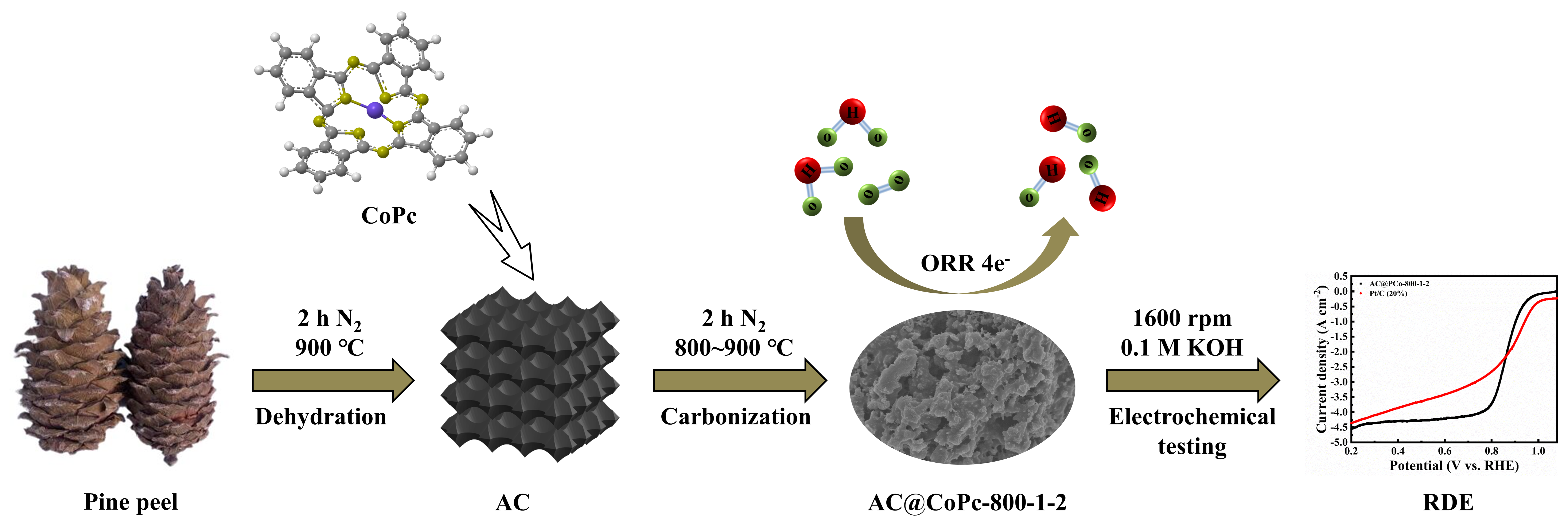Compared with precious metal catalysts, non-platinum catalysts have the advantages of low cost and high performance. Among them, the activated carbon (AC) with a large specific surface area (SSA) can be used as a carrier or as a carbon source of nonprecious metal/carbon system catalyst at the same time. Therefore, this paper uses cheap pine peel bio-based materials to prepare large surface area activated carbon and then compound with cobalt phthalocyanine (CoPc) to obtain a high-performance cobalt/nitrogen/carbon catalyst. The merits include AC@CoPc composite catalysts are prepared by precisely controlling the composite proportion of AC and CoPc, the atomically dispersed Co nanoparticles form and synergistically with N promote the exposure of CoNx active sites, and the Eonset of the catalyst treated with a composite proportion of AC and CoPc of 1 to 2 at 800 °C (AC@CoPc-800-1-2) is 1.01 V, which is higher than Pt/C (20 wt%) catalyst. Apart from this, the stability is 87.8% in 0.1 M KOH after 20000 s testing in compared with other AC@CoPc series catalysts and Pt/C (20 wt%) catalyst. Considering from the performance and price of the catalyst in practical application, these composite catalysts combine biomass carbon materials with phthalocyanine series, which will be widely used in the area of nonprecious metal catalysts.

